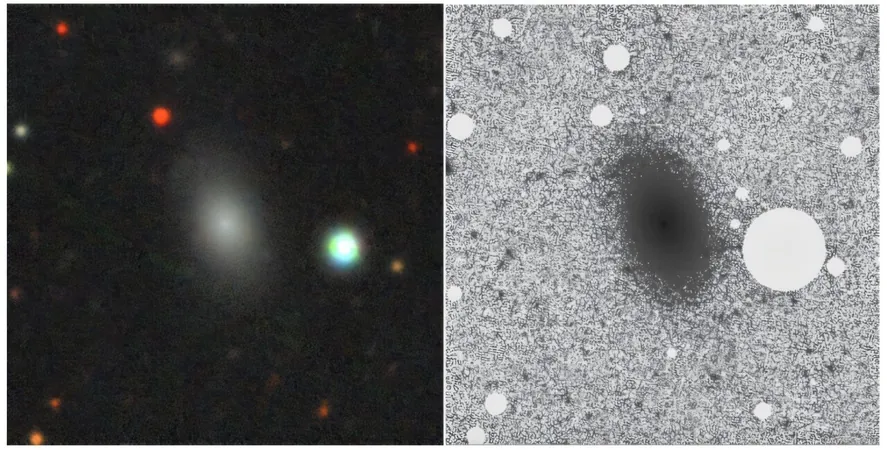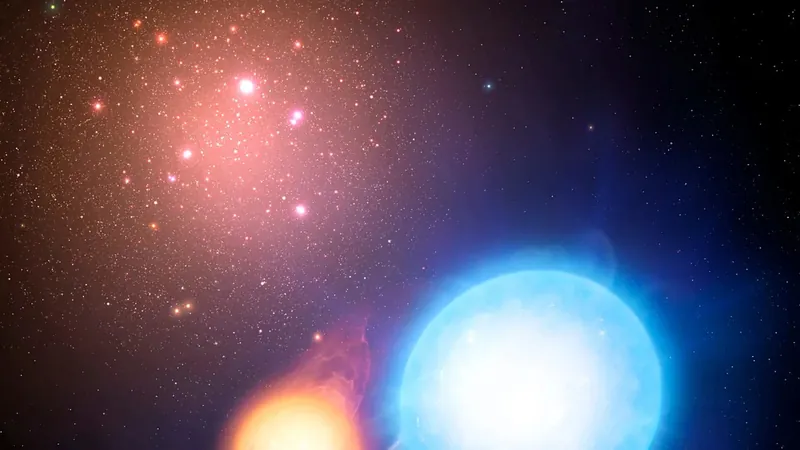
Astronomers Unveil Stunning Discovery: A 'Runaway' Dwarf Galaxy!
2025-09-04
Author: Charlotte
A Galactic Mystery Unraveled!
In an exciting astronomical breakthrough, researchers from Yonsei University in Seoul, South Korea, have identified a new isolated early-type dwarf galaxy that seems to have escaped its cosmic neighborhood. This remarkable finding, published on August 28, has sparked fresh discussions regarding the origins of such elusive galaxies.
What Are Dwarf Galaxies?
Dwarf galaxies, characterized by their low luminosity and mass—typically housing a few billion stars—are fascinating subjects of study. Among them, early-type dwarf galaxies (dEs) represent the most common variant found in nearby galaxy clusters and groups.
The Runaway Mystery!
The recent identification of isolated dEs has reignited debates regarding their formation. Some scientists theorize that these galaxies could be 'runaway' dEs, remnants of larger galaxies that were torn apart during close encounters with others and subsequently ejected far into the cosmos.
Meet dE01+09!
Led by astronomer Sanjaya Paudel, the team at Yonsei University utilized data from various astronomical surveys, including the renowned Sloan Digital Sky Survey (SDSS), to spotlight a unique dwarf galaxy named SDSS J011754.86+095819.0, or dE01+09. Nestled approximately 3.9 million light-years from its presumed host group, NGC 524, dE01+09 showcases typical features of a dE with no signs of recent central star formation.
A Closer Look at dE01+09's Characteristics
With an effective radius of around 3,900 light-years and a mass estimated at 280 million solar masses, dE01+09 boasts an impressive 8.3 billion-year history. Researchers found its metallicity to be about -1.19 dex, shedding light on its ancient origins.
Tracing Its Lost Path
Researchers speculate that dE01+09 might have once belonged to the NGC 524 group, evolving as a star-forming dwarf before environmental changes halted its development. The theory suggests that around 3.5 billion years ago, a strong dynamical interaction could have propelled this once vibrant galaxy beyond the group's gravitational influence.
An Invitation for Further Exploration!
The discovery of a quiescent dwarf galaxy like dE01+09 in such isolation is a rarity, prompting researchers to call for more in-depth studies to unravel the mysteries surrounding these fascinating cosmic entities. What secrets does dE01+09 hold about the universe's evolution? The journey to find out has just begun!









 Brasil (PT)
Brasil (PT)
 Canada (EN)
Canada (EN)
 Chile (ES)
Chile (ES)
 Česko (CS)
Česko (CS)
 대한민국 (KO)
대한민국 (KO)
 España (ES)
España (ES)
 France (FR)
France (FR)
 Hong Kong (EN)
Hong Kong (EN)
 Italia (IT)
Italia (IT)
 日本 (JA)
日本 (JA)
 Magyarország (HU)
Magyarország (HU)
 Norge (NO)
Norge (NO)
 Polska (PL)
Polska (PL)
 Schweiz (DE)
Schweiz (DE)
 Singapore (EN)
Singapore (EN)
 Sverige (SV)
Sverige (SV)
 Suomi (FI)
Suomi (FI)
 Türkiye (TR)
Türkiye (TR)
 الإمارات العربية المتحدة (AR)
الإمارات العربية المتحدة (AR)